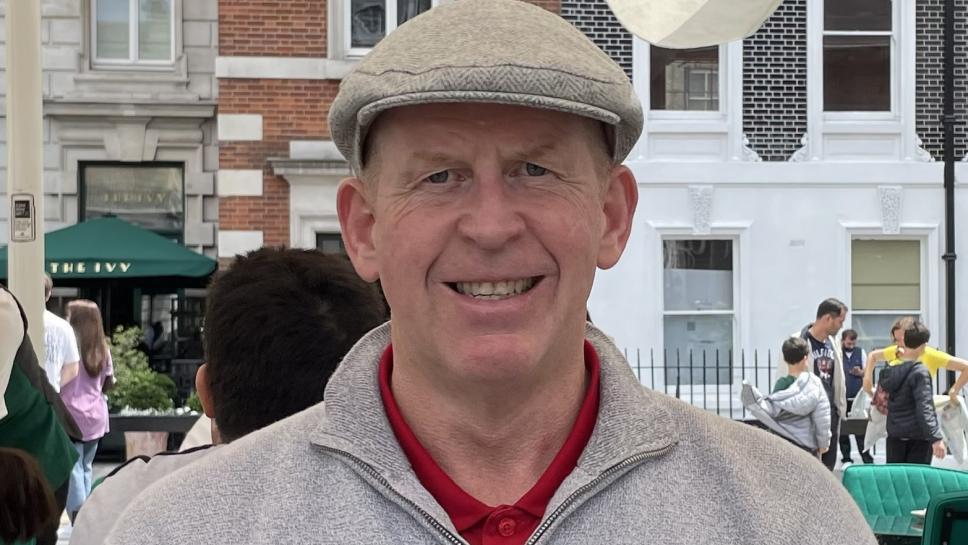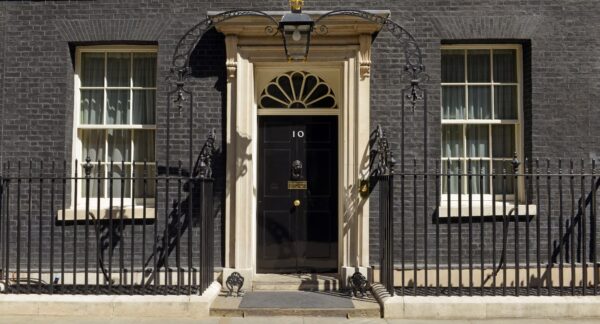Rob Jones, 57, from Stoke-on-Trent, talks about what it’s like to live with limb-girdle muscular dystrophy, a progressive condition that causes weakness in the arms and legs – and the warning signs to look out for.
I was in my mid-thirties when I noticed something didn’t seem right

Back in the mid-1990s, I used to spend all my spare time playing football, golf and squash and found myself getting slower around the squash court. For quite some time, I put it down to the fact that either I was getting a bit older and slower, or maybe that others were training harder and getting fitter than me.
At home I always used to run up the stairs two at a time, but I found that my legs were getting weaker, and I couldn’t do that anymore. Then, one evening as I was getting ready for a night out with friends, I noticed that one of my quads looked smaller than the other. At this point, I added these bits of information together and it became clear to me that something was wrong.
My doctor ran some blood tests, and a surgeon took a biopsy from my left quad. Results revealed that there was serious muscle wastage happening, but my consultant couldn’t make a diagnosis, as the gene that causes my condition hadn’t been identified. This was in 1999. I was told the muscle wasting could possibly affect my heart and lungs, and that I had a serious illness. However, they couldn’t give me a prognosis. The worrying every single day was by far the worst part.
After 12 years of further tests and biopsies, I got a diagnosis of limb-girdle muscular dystrophy 2L in 2011 and, luckily, my heart and lungs were not affected. Not knowing what was wrong with me for all that time, or what would happen, was absolutely soul-destroying.
As I became weaker, I had to stop playing all sport; I played my last game of golf in 2005. At the moment, thankfully, I’m still on my feet, but without orthotic knee braces I wouldn’t be able to walk. They have been an absolute godsend and helped to minimise my falls. I’m still able to run my own business in the financial services sector, along with being a regular stock market trader. And, over the last 18 years I’ve built a portfolio of buy-to-let properties, which I manage myself.
Although my neurology consultant has told me that my ability to walk and balance will continue to deteriorate, I still manage to work out most days on my rowing machine. In fact, back in 2013, a couple of years after my diagnosis, I rowed the distance of the English Channel in a gym to fundraise for Muscular Dystrophy UK. After six months of very hard training, I completed the 22-mile distance in two hours and 55 minutes, and raised £2,200. Although I cannot row that distance now, I still row five miles a day to look after my upper body strength and cardiovascular system.
My muscle weakness is predominantly in my legs and core at the moment, but it’s also starting to slowly affect my upper body muscles. As I use my arms more than most to aid my mobility, it’s vitally important that I look after my upper body muscle structures as much as possible.
With my mobility scooter, I can still enjoy visits to National Trust parks. To date, I have made minor adaptations at home, which work well for me but moving forward there will be a big decision to make. Do I invest in a single-storey ground floor extension with purpose-built bedroom and wet room, or up sticks completely and move to a more suitable bungalow? I love where I live, and this will be a big decision; it will definitely be a big contest between head and heart.
Looking back to when I was a kid, after my paper round it was always off to the park with my mates to play football, throwing our jumpers down to act as goal posts. I was always the last out, usually being thrown out by the gatekeeper who was ringing the bell and locking the gates behind me. I consider myself very fortunate to have been able to enjoy playing so much sport from my childhood through to my mid-30s.
There’s understandably a lot of publicity and research that goes into other more well-known and more serious types of muscular dystrophy. It feels like my type of muscular dystrophy is the world’s best-kept secret, so I try to do as much as possible to raise public awareness. I am one of 110,000 people in the UK, living with a muscle-wasting condition.
Hopefully, one day there will be a cure for all types of muscular dystrophy, and I’d like to say a big thanks to MDUK for all the great work they do in funding research into muscle-wasting conditions.
Rare Disease Day takes place on 28 February and aims to raise awareness and generate change for the 300 million people worldwide living with a rare disease, as well as their families and carers. Find out more at https://www.rarediseaseday.org/


